
New-paintings
Four new paintings depicting early events of the Restoration have been on display at the Sacred Grove Welcome Center since March 2020. Photo by Terry Spallino.2021 by Intellectual Reserve, Inc. All rights reserved.This story appears here courtesy of TheChurchNews.com. It is not for use by other media.
By Sydney Walker, Church News
Many who have virtually toured the Sacred Grove and Smith Farm in Palmyra, New York, in recent months may have seen four new paintings recently commissioned by the Church.
The paintings depict four key Restoration events that took place on the site and are displayed in a new exhibit in the Welcome Center, to the right of the panoramic window offering an expansive view of the Smith farm. They were installed in March 2020, shortly after Church historic sites closed due to COVID-19.
“Other than those of us working at the site, missionaries and a few staff people here, nobody has really seen those yet — except for the tens of thousands of people that have seen them virtually,” said President Terry J. Spallino of New York and Pennsylvania Historic Sites, adding that virtual visitors have come from more than 60 countries.
Virtual tours of the Sacred Grove and Smith Farm usually begin with the new exhibit, setting the tone for the tour and giving viewers a “realistic” picture of what the events may have looked like, said Sister Linda J. Spallino, President Spallino’s wife.
Aaron West, historian and writer in the Church History Department’s Historic Sites Division, led the team that developed the purpose and design of the exhibit. “These paintings are there to orient people to the spiritual significance of events that occurred on this site,” he said.
“Our hope is that these works of art will prime people for immersive learning experiences in those sacred places. And we’re seeing now that that can happen in person and virtually.”
The Paintings
Executed in collaboration by artists Linda Curley Christensen and Michael Malm, the paintings illustrate four events: Joseph Smith’s First Vision (1820), the angel Moroni’s first visit (1823), bringing the plates home from the Hill Cumorah (1827) and returning the plates to the angel Moroni (1829).
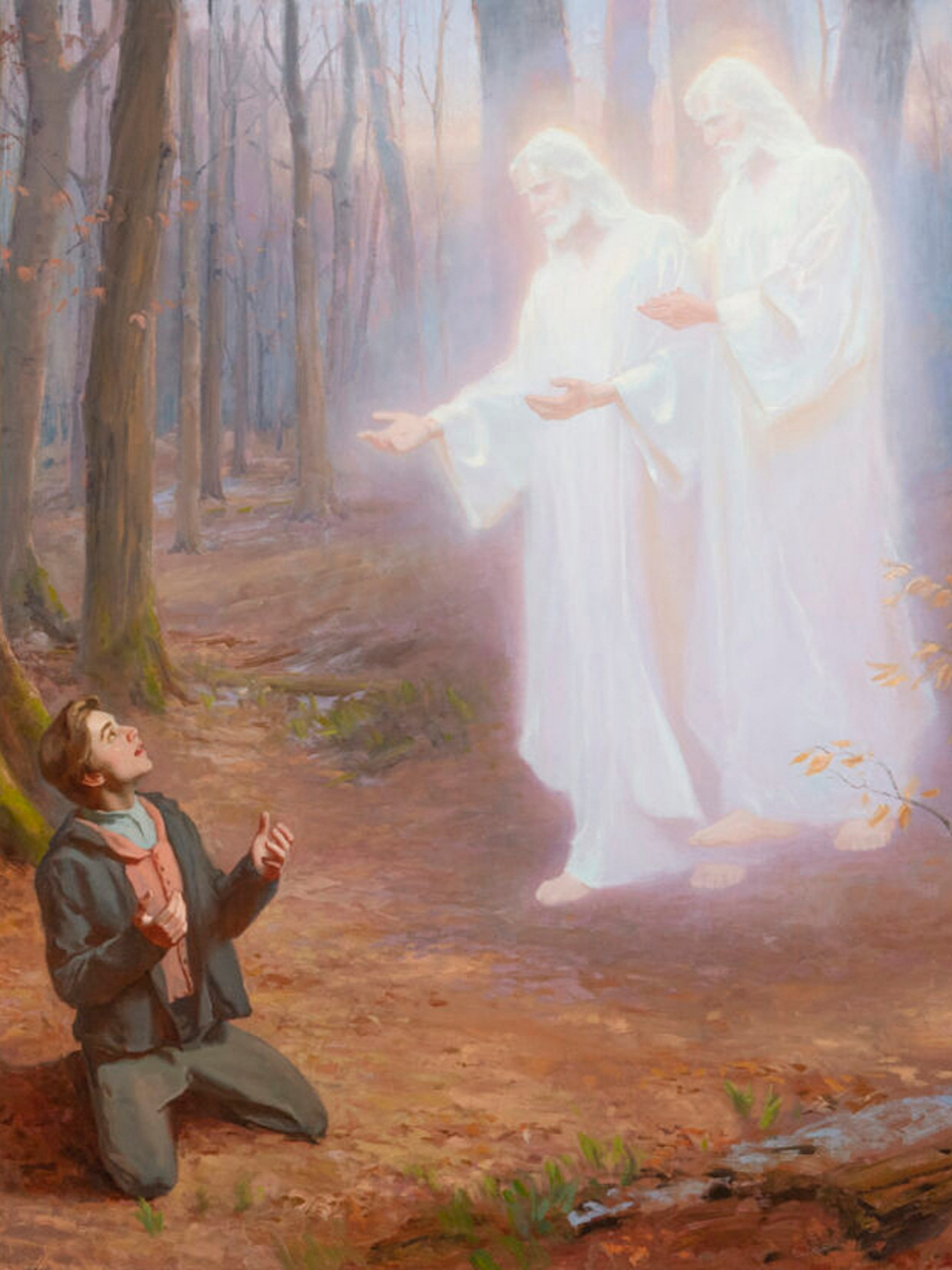
New-paintings
“The First Vision,” Linda Curley Christensen, Michael Malm, 2020, oil on canvas.2021 by Intellectual Reserve, Inc. All rights reserved.Each painting stands 58 inches tall and 34 inches wide — except for the First Vision scene, which stretches about twice as wide. To the left of the paintings is a panel that reads “The Lord said, … behold, I will proceed to do a marvellous work (Isaiah 29:13-14).”
The artists visited Palmyra in December 2019 to experience the sites and capture details they wanted to reflect in the paintings. They also did research to determine what the grove looks like in early spring.
West pointed out a few details about the paintings that stand out to him.
Referencing the First Vision scene, he said, “Whenever I look at that painting, my eye always goes to Jesus Christ. When I look at Joseph, I follow his gaze to the Savior. When I look at the Father, I see Him pointing to the Savior. Even the landscape in that painting draws my attention to Jesus Christ. Thinking of what President [Russell M. Nelson] has told us — ‘hear Him’ — that painting helps me hear Him.”
The sequence of the paintings shows the “unfolding Restoration” between 1820–1829, West continued. “We also see the growth of Joseph Smith and his family. We see him growing from a 14-year-old boy to man who is becoming a Prophet. And from a 17-year-old, who was seeing Moroni for the first time, to a few years later when he and Moroni have a relationship.”
The painting of Joseph Smith bringing home the gold plates from the Hill Cumorah portrays the involvement of his family, West said. His sister, Katharine, is shown helping Joseph place the plates on the table, while his mother, Lucy Mack Smith, is at her side. His wife, Emma, is supporting him.
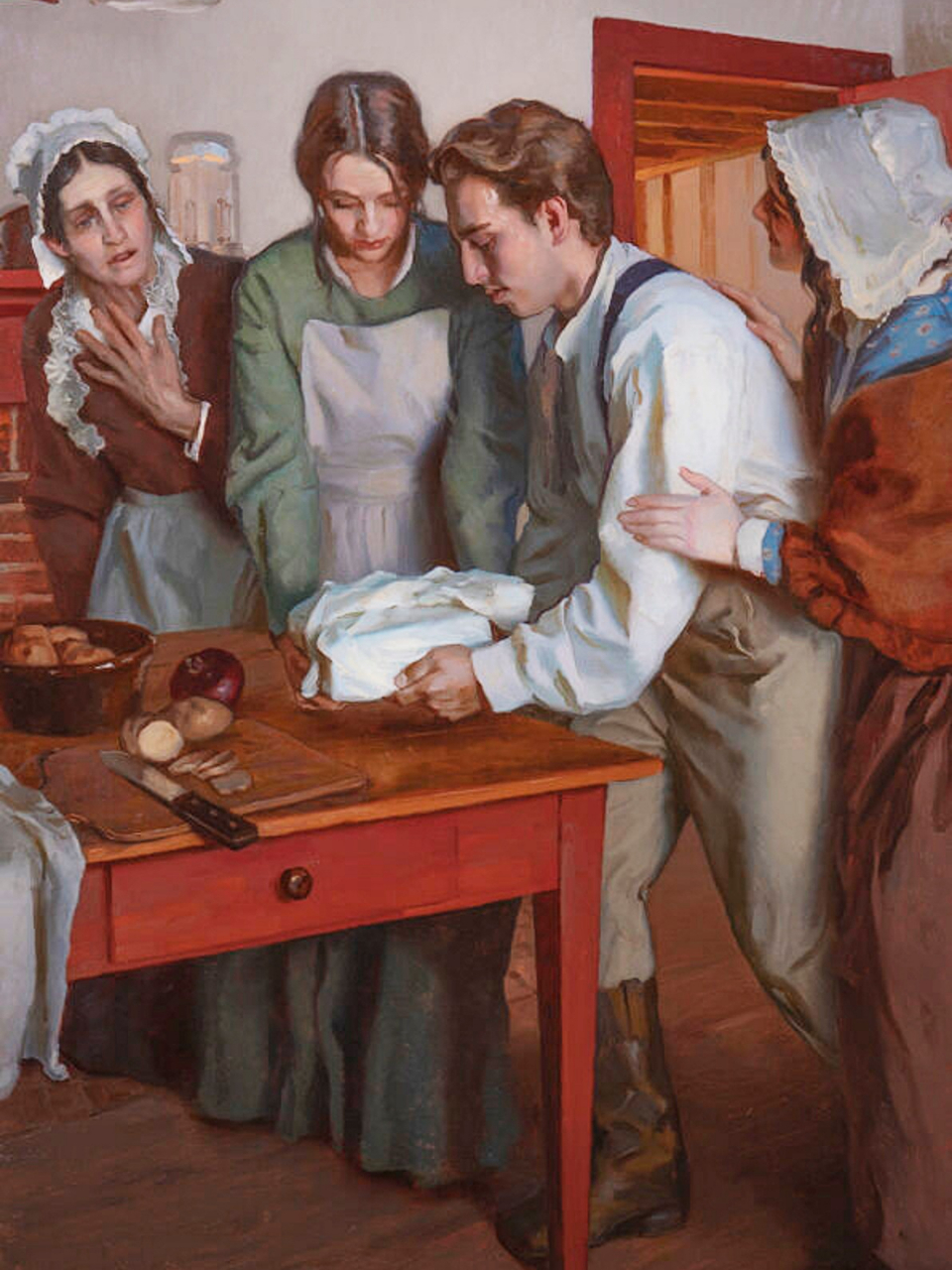
New-paintings
“Bringing the Gold Plates from the Hill Cumorah,” Linda Curley Christensen, Michael Malm, 2020, oil on canvas. 2021 by Intellectual Reserve, Inc. All rights reserved.Having completed the translation of the Book of Mormon and shown the gold plates to eight witnesses, Joseph Smith returns the plates to the angel Moroni. In this final scene, West said the artists did “a remarkable job of capturing the joy that Joseph and Moroni must have felt at the completion of that part of their stewardship.”
The Artists
Painting for this new exhibit in the Sacred Grove Welcome Center was not the first time the two artists collaborated on a Church-commissioned project. Christensen and Malm previously worked together on pieces for the Priesthood Restoration Site in Harmony, Pennsylvania.
Christensen, who has been painting with oils since 1977 and lives in Wallsburg, Utah, described this most recent project as “sacred.” She said it took her back to her childhood as she remembered a young, Nursery-age version of herself who once drew a “beautiful scribble” and handed it to her mother “so proudly.”
When her mother asked “What is it?” she explained it was Joseph in the grove. “Well, where’s Joseph?” her mother responded. Pointing to the scribbles, the young Christensen said, “He’s behind those trees.”
Recalling this story with a chuckle, Christensen said, “My very youngest and first known piece of art was Joseph in the grove — which I think is a testimony to the fact that sometimes our greatest desires are rewarded to us by the Lord who knows our hearts and would allow us to work on this project.”A highlight for her was learning about Joseph Smith and his family, their circumstances and their preparation for these early Restoration events. “I loved thinking about how we prepare to speak to the Lord and how we take our questions to the Lord,” she said. “And this painting, this project, and studying the history helps us to prepare to come closer to the Lord in our own prayers and in our own studies.”
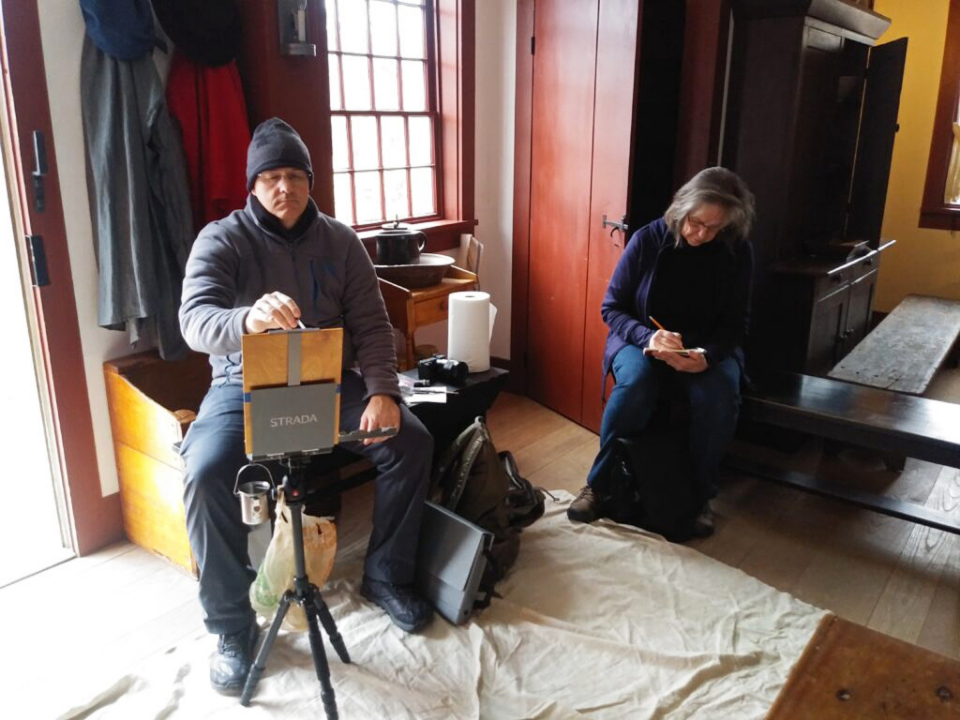
New-paintings
Artists Michael Malm, left, and Linda Curley Christensen, are pictured in the Smith Family Frame Home in Palmyra, New York, in December 2019. The home is featured in the artists’ painting of Joseph Smith bringing the plates home from the Hill Cumorah. Photo by Aaron West.2021 by Intellectual Reserve, Inc. All rights reserved.Malm, Christensen’s counterpart from Cache Valley, Utah, has been painting for about 27 years. He added that he hopes the paintings serve as a “springboard” for people to ponder on what happened at those sites.
“If the paintings can accomplish that, I think that we’ve done our job. … In the end, it’s all about the Savior,” he said.
Another new exhibit in the Sacred Grove and Smith Farm Welcome Center featuring artifacts excavated from the site is expected to be finished later this year.
To sign up for a virtual tour of the Sacred Grove and Smith Farm, click here.
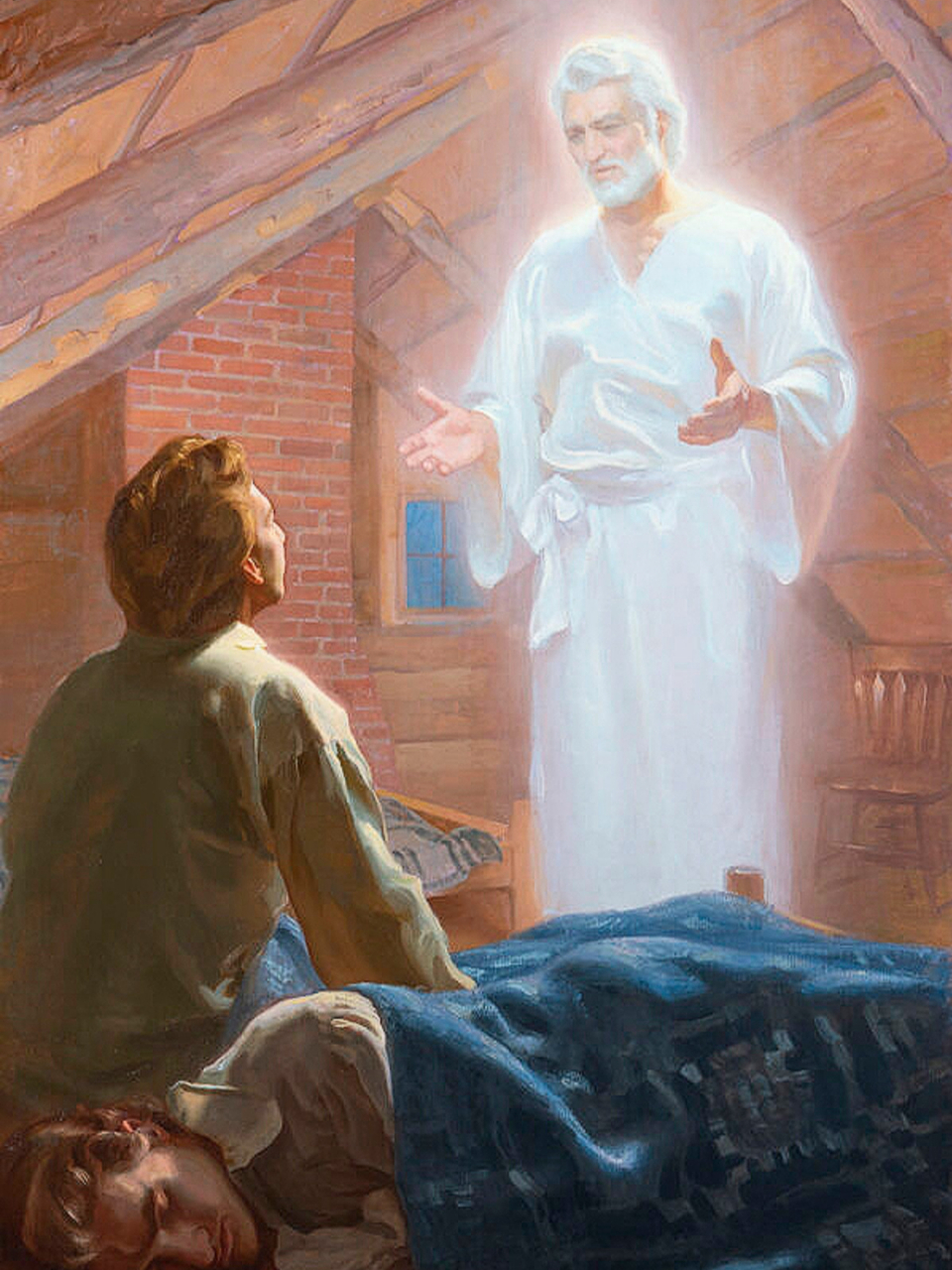
New-Paintings
“The Angel Moroni’s First Visit,” Linda Curley Christensen, Michael Malm, 2020, oil on canvas. 2021 by Intellectual Reserve, Inc. All rights reserved.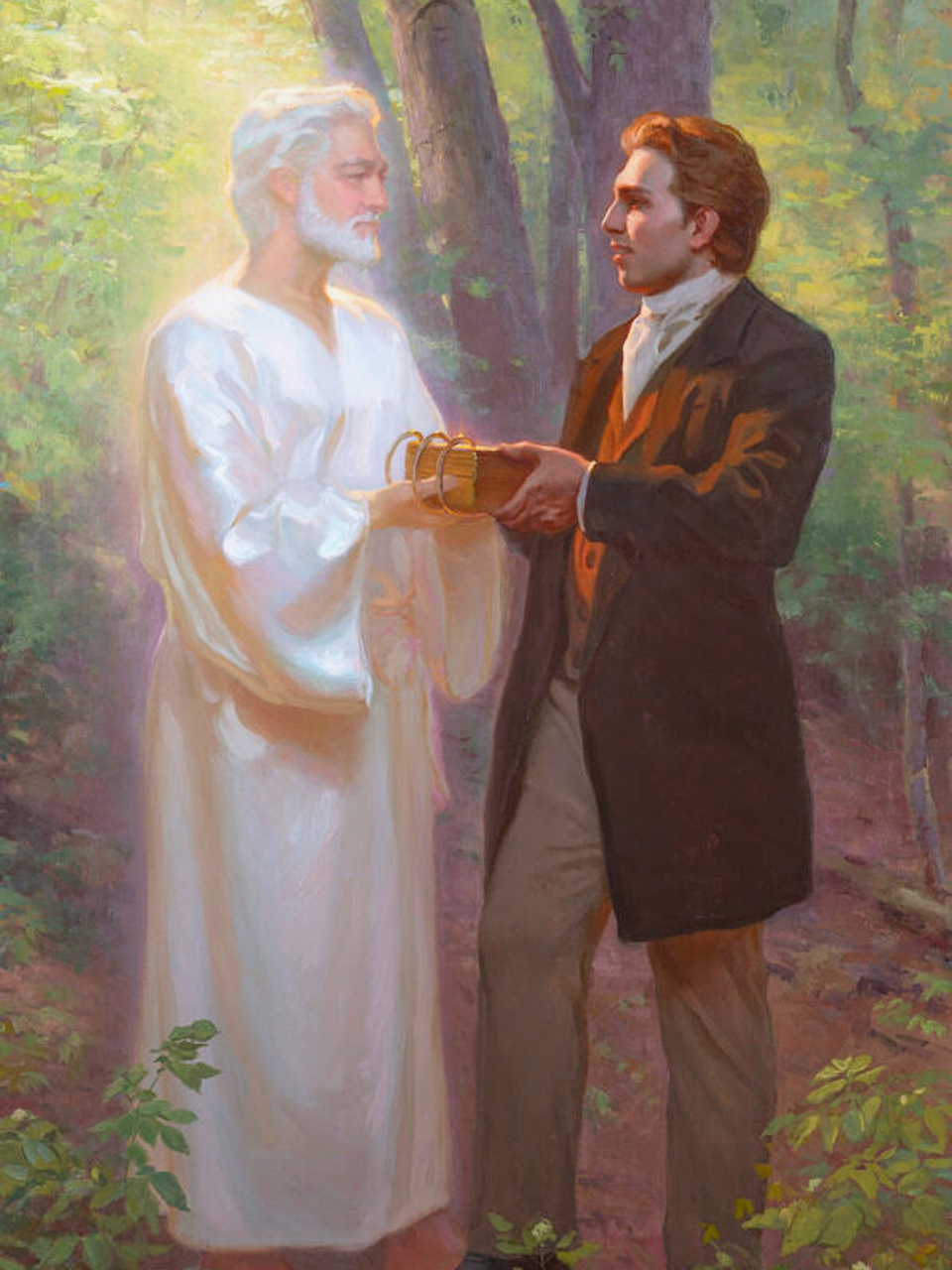
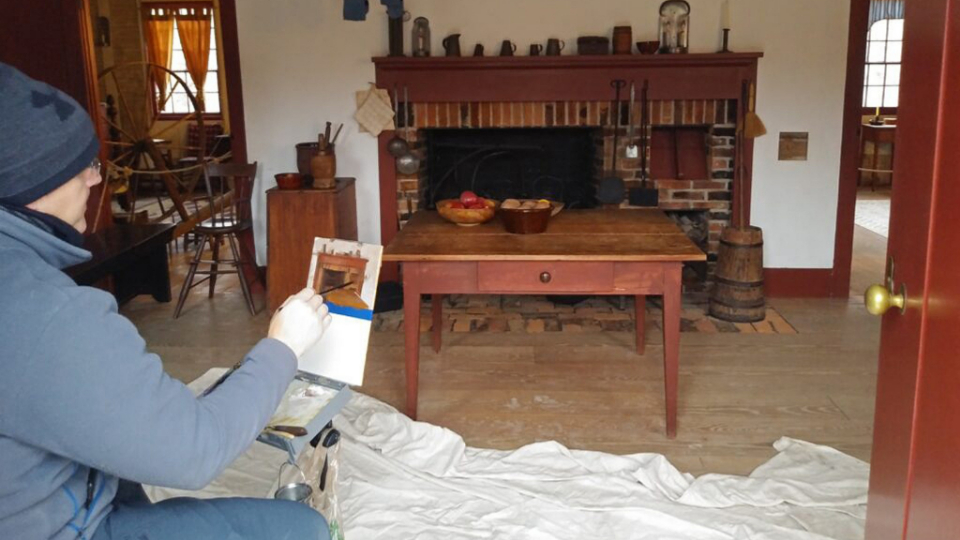
New-paintings
Artist Michael Malm captures details of a table in the Smith Family Frame Home in Palmyra, New York, in December 2019. This table is depicted in the painting of Joseph Smith bringing the plates home from the Hill Cumorah. Photo by Aaron West.2021 by Intellectual Reserve, Inc. All rights reserved.Copyright 2020 Deseret News Publishing Company